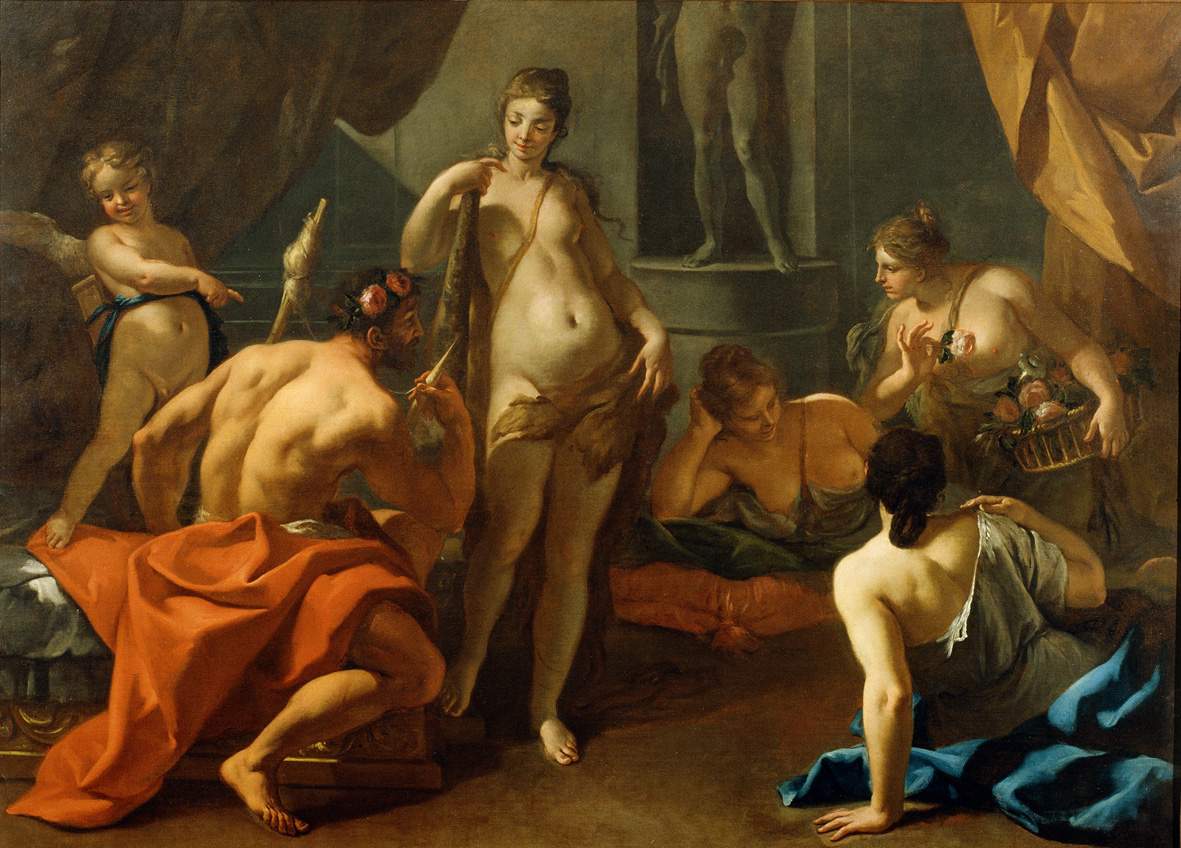The 18th century of Sebastiano Ricci and the other greats on display in Belluno with works from the Cariverona Foundation
From April 6 to September 22, 2019, Palazzo Fulcis in Belluno is hosting the exhibition Sebastiano Ricci. Rivals and Heirs. Works of the Eighteenth Century by the Cariverona Foundation, which brings into dialogue one of the masterpieces of Sebastiano Ricci (Belluno, 1659 - Venice, 1734), the cycle of paintings in the Camerino d’Ercole, with works by the greats of the eighteenth century who were rivals of Ricci or who were fascinated by his lesson. Among the various artists on display in the exhibition are Giovan Gioseffo del Sole, Jacopo Amigoni, Nicola Grassi, Giuseppe Nogari, Francesco Fontebasso, and Antonio Bellucci. The exhibition brings works from the Cariverona Foundation to Belluno and is curated by Denis Ton, curator of the Civic Museums of Belluno.
Sebastiano Ricci, who worked at Palazzo Fulcis and created the three canvases for the Camerino d’Ercole, is the patron deity of the exhibition venue, and the paintings depicting the Fall of Phaeton, Hercules at the Crossroads and Hercules and Onphale represent some of the greatest masterpieces of 18th-century European art. The exhibition aims to delve into the premises of Sebastiano Ricci’s art, his relationships and the influence he had in the sphere of great history and religious painting, and there will also be space for the figure of Sebastiano’s grandson, Marco Ricci (Belluno, 1676 - Venice, 1730), who was active mainly in landscape art. Indeed, the two great names of Bellunese art in the 18th century played a key role not only in the Veneto and Italy, but within a European dimension, attested also by the cosmopolitanism of their patrons and their numerous travels.
“Choosing the works of the Cariverona Collection among those created during the years of activity of the two masters,” anticipates curator Denis Ton, “it is therefore natural to identify in the canvases of Andrea Celesti, Antonio Bellucci, Giovan Gioseffo Dal Sole, those elements that constituted the premises on which the complex cultural background from which the great operation conducted by Sebastiano was built, between material freedom, late seventeenth-century academicism and Emilian culture, was inspired. The presence of important works by Jacopo Amigoni and, above all, Antonio Pellegrini, makes it possible to reconstruct an encounter between the different tendencies operative at the beginning of the 18th century. Ricci, Pellegrini and Amigoni have always, particularly thanks to the historiographical reconstructions of Rodolfo Pallucchini, been recognized as the protagonists of the transformation of Venetian and European art, and at times they were direct rivals not only in Venice but also in England. Equally, the presence of artists such as Francesco Fontebasso and Nicola Grassi allows us to broaden our gaze to the influence Ricci exerted on his pupils (the former) or other coeval masters. Only episodically was Sebastiano active in a genre a theme such as that of the so-called ’Heads of Character,’ figures portrayed in their natural state and variously interpreted by artists greatly sought after by the eighteenth-century market such as Francesco Nogari and, with even more international success, Pietro Rotari. The former, in particular, treasured the great lesson of pictorial freedom promoted by the Bellunese painter. The influence of his nephew Marco Ricci was no less, as far as the history of landscape was concerned, sometimes working in collaboration with Sebastiano. To convoke the important landscape of Peruzzini and Magnasco, and the works of Giuseppe Diziani and Antonio Zais is to represent a significant part of this history and the particular predisposition of this genre in the art of the territory.”
The exhibition also wants to be an opportunity to discover or rediscover the “container” that houses it, Palazzo Fulcis and the museum collections that have been on display in it since 2017, the year in which the precious building, fully restored, was granted on loan by the Cariverona Foundation, which owns it, to the City of Belluno to house the city’s historical and artistic collections. For information you can visit the Palazzo Fulcis website.
Pictured: Sebastiano Ricci, Hercules and Onphale.
 |
| The 18th century of Sebastiano Ricci and the other greats on display in Belluno with works from the Cariverona Foundation |
Warning: the translation into English of the original Italian article was created using automatic tools. We undertake to review all articles, but we do not guarantee the total absence of inaccuracies in the translation due to the program. You can find the original by clicking on the ITA button. If you find any mistake,please contact us.



























